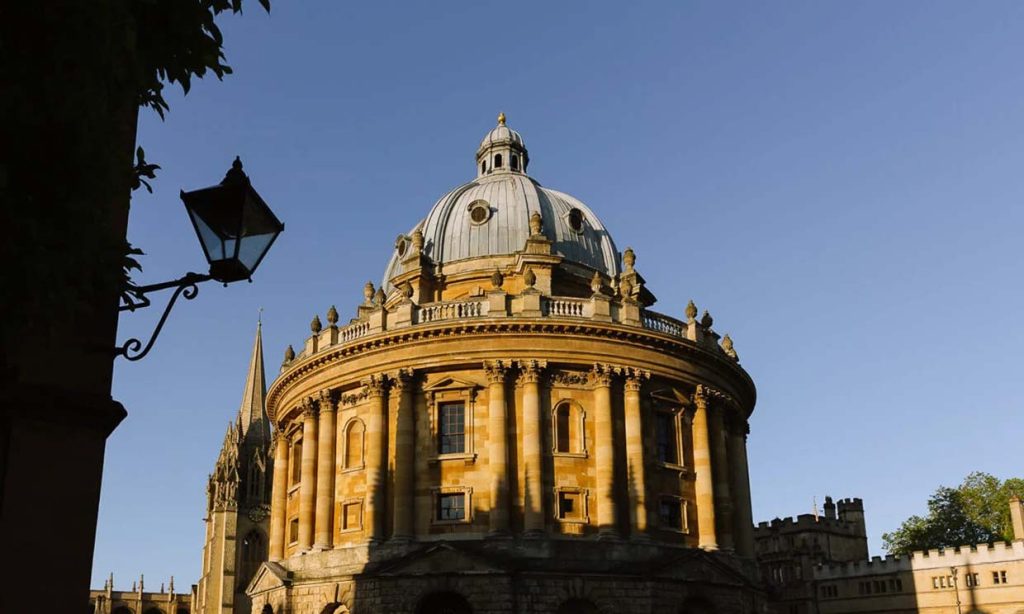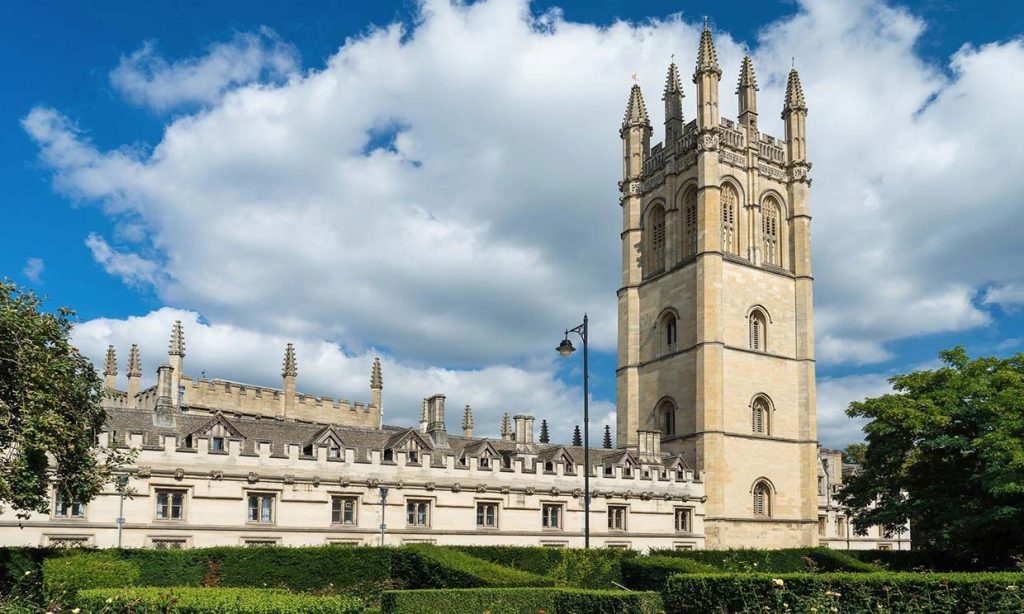My recent expedition to Oxford offered a fascinating exploration of the city’s rich tapestry of historical architecture, specifically during the Renaissance period. Join me on this detailed journey as I recount my personal experiences at three chosen sites and recommend four others that epitomize Oxford’s cultural and architectural legacy. From the Bodleian Library to the Radcliffe Camera, and from Christ Church College to hidden gems like The Queen’s College, each location unveils a unique chapter of Oxford’s Renaissance charm.
My Selected Architectural Marvels:
The Bodleian Library – A Literary Sanctuary
Location: Bodleian Library, Broad Street, Oxford, OX1 3BG, United Kingdom
Nestled on Broad Street, the Bodleian Library stands as a venerable institution, seamlessly weaving together the architectural styles of Gothic and Renaissance into a masterpiece. With a legacy that spans centuries, this library transcends being merely a repository of books; it is a living testament to Oxford’s enduring intellectual prowess. Its walls cradle a treasure trove of literary gems, with each volume whispering tales of eras long past.
Stepping into the hallowed halls of the Bodleian Library felt like entering a literary sanctuary frozen in time. The architectural nuances, from the soaring vaulted ceilings to the intricately adorned windows, orchestrated an ambiance steeped in the timeless pursuit of knowledge. Every corner of the library exuded an air of reverence for the written word and the collective wisdom it encapsulates.
The Bodleian Library’s commitment to preservation was palpable, as rare manuscripts and delicate volumes found a safe haven within its walls. The juxtaposition of historical charm and modern research technology was not only commendable but also reflected a forward-looking approach to academic inquiry. Roaming through the labyrinthine shelves, the resonance of centuries of scholarly endeavors echoed, making the visit to the Bodleian Library an immersive journey through the corridors of literary history.
The Radcliffe Camera – A Spherical Marvel
Location: Radcliffe Camera, Radcliffe Square, Oxford, OX1 4AJ, United Kingdom

As a neoclassical gem nestled in Radcliffe Square, the Radcliffe Camera stands as a testament to Oxford’s architectural prowess. This circular library, surrounded by the rich history of Radcliffe Square, effortlessly fuses Renaissance elegance with classical simplicity, creating an iconic symbol of academic splendor.
Being in the presence of the Radcliffe Camera was akin to stepping into a visual marvel. The perfectly balanced proportions and the interplay of light on its distinctive dome highlighted the brilliance inherent in neoclassical design. The circular structure seemed to invite exploration, and as I approached, the intricate details of the facade became more apparent.
The surrounding Radcliffe Square added a contextual richness to the experience. The historical resonance of the nearby Bodleian Quadrangle and other architectural gems in the vicinity deepened my appreciation for the Radcliffe Camera’s role in Oxford’s scholarly legacy. It wasn’t just a library; it was a spherical marvel that encapsulated centuries of academic pursuit and architectural finesse. Each step around its circumference felt like a journey through time, connecting with the intellectual currents that have flowed through Oxford’s heart for generations.
Christ Church College – Where Hogwarts Meets History
Location: Christ Church, St Aldate’s, Oxford, OX1 1DP, United Kingdom
Imposing and steeped in history, Christ Church College stands as an enduring emblem of Oxford’s academic grandeur. Its architectural splendor, including the iconic Tom Tower designed by Sir Christopher Wren, invites visitors into a realm where the magic of Hogwarts seamlessly intersects with the tapestry of history.
Meandering through the hallowed halls of Christ Church College was a journey through time and imagination. The Gothic Revival architecture, with its intricate details and soaring spires, evoked a sense of awe reminiscent of medieval times. The vast expanse of the Tom Quad, surrounded by the cloisters, felt like a haven of tranquility within the bustling city.
The Cathedral, with its timeless design, added a layer of spiritual grandeur to the overall ambiance. As a fan of the cinematic world of Harry Potter, the realization that I was treading the same paths where Hogwarts was brought to life on the silver screen was nothing short of magical. The interplay between academic solemnity and the enchantment of cinema made Christ Church College a multifaceted gem, weaving together the threads of Oxford’s rich heritage and its contemporary cultural significance.
Top Recommendations:
The Sheldonian Theatre – A Theatrical Extravaganza
Location: Sheldonian Theatre, Broad Street, Oxford, OX1 3AZ, United Kingdom
Standing proudly on Broad Street, the Sheldonian Theatre is a Baroque marvel designed by the illustrious Sir Christopher Wren. Its distinct cupola and semicircular architecture contribute to its theatrical ambiance, making it not just a building but a stage for grandeur. The Sheldonian Theatre serves as an exquisite venue for a diverse range of events, from classical concerts to solemn ceremonies and academic gatherings.
Experiencing a classical concert within the Sheldonian Theatre was nothing short of enchanting. The acoustics, carefully crafted to elevate musical performances, transformed each note into a melodic masterpiece that resonated through the space. The visual spectacle of the painted ceiling, depicting a celestial scene, added a layer of artistic grandeur to the auditory delight.
While the Sheldonian Theatre is renowned for hosting solemn academic ceremonies, the opportunity to witness a cultural event within its walls is an experience not to be missed. The fusion of architectural magnificence, historical significance, and the vibrant energy of cultural performances creates a theatrical extravaganza that transcends the boundaries of time. It is a living testament to the versatility of this architectural gem, where every event becomes a performance, and every spectator is part of the grand narrative woven into its storied walls.
Magdalen College – Tranquility by the River Cherwell
Location: Magdalen College, High Street, Oxford, OX1 4AU, United Kingdom
Magdalen College, gracefully positioned along the banks of the River Cherwell, is a harmonious blend of medieval and Renaissance architectural styles. Its captivating features include a cloistered courtyard, the iconic Magdalen Tower, and the serene Deer Park, creating an environment that exudes tranquility.

The exploration of Magdalen College’s grounds provided a refreshing escape. The meandering River Cherwell offered picturesque views, while the resonant chimes emanating from the Great Tower added a touch of timeless elegance. The lush Deer Park, with its peaceful ambiance, served as a haven for contemplation, seamlessly integrating natural beauty with the architectural grace of Magdalen College. The juxtaposition of these elements created a serene atmosphere, inviting a pause from the bustling city life into the tranquil embrace of Magdalen’s historic charm.
The Queen’s College – A Hidden Gem on High Street
Location: The Queen’s College, High Street, Oxford, OX1 4AW, United Kingdom
Tucked away on High Street, The Queen’s College is a hidden gem that emanates understated charm. Its classical façade and serene gardens create an inviting atmosphere. Founded in 1341, the college’s architectural evolution seamlessly weaves together medieval, Tudor, and Renaissance elements.
The revelation of The Queen’s College is akin to the discovery of a hidden treasure. The meticulously manicured gardens, the presence of an elegant chapel, and an overall sense of seclusion within the heart of Oxford contribute to the serene escape it offers. The quiet courtyards, adorned with timeless architecture, unveil a different facet of historical richness, creating an ambiance that stands as a testament to the college’s enduring legacy.
The Ashmolean Museum – Where Art and History Converge
Location: Ashmolean Museum, Beaumont Street, Oxford, OX1 2PH, United Kingdom
The Ashmolean Museum, situated on Beaumont Street, is celebrated for its remarkable art collections and a harmonious blend of architectural styles. Established in 1683, this cultural institution houses an extensive array of treasures from different corners of the globe, creating a nexus where art and history converge.
The Ashmolean Museum’s allure lies in its ability to offer a diverse cultural experience within a building that seamlessly melds historic and modern architectural elements. Navigating through its varied collections, each exhibit becomes a journey through time and across continents. The rooftop terrace, with its panoramic views of Oxford, adds a contemporary touch to the overall experience, creating a unique blend of historical appreciation and modern aesthetics. The exploration of exhibits within the museum becomes not just a visual feast but an enriching endeavor, where the architectural nuances of the space enhance the appreciation of the diverse cultural treasures it houses.
Oxford’s historical architecture, steeped in the legacy of the Renaissance, invites travelers to embark on a journey through time. From the scholarly ambiance of the Bodleian Library to the cinematic allure of Christ Church College, each site unfolds a chapter of Oxford’s cultural and intellectual heritage. The recommended gems, such as the Sheldonian Theatre and Magdalen College, add layers of diversity to the architectural panorama, ensuring a fulfilling exploration for enthusiasts of history, art, and culture.
Planning a visit that aligns with personal interests, whether it be literature, music, or the tranquility of gardens, allows for a more tailored and enriching sojourn. As I reflect on my time wandering through Oxford’s architectural marvels, I am reminded that the beauty of the Renaissance is not confined to history books but is alive in every stone, arch, and spire that graces this remarkable city.
Oxford’s historical architecture is not merely a collection of buildings; it is a living testament to the ceaseless pursuit of knowledge and the enduring spirit of human creativity. May your exploration of these architectural wonders be as awe-inspiring as the centuries that have shaped them.